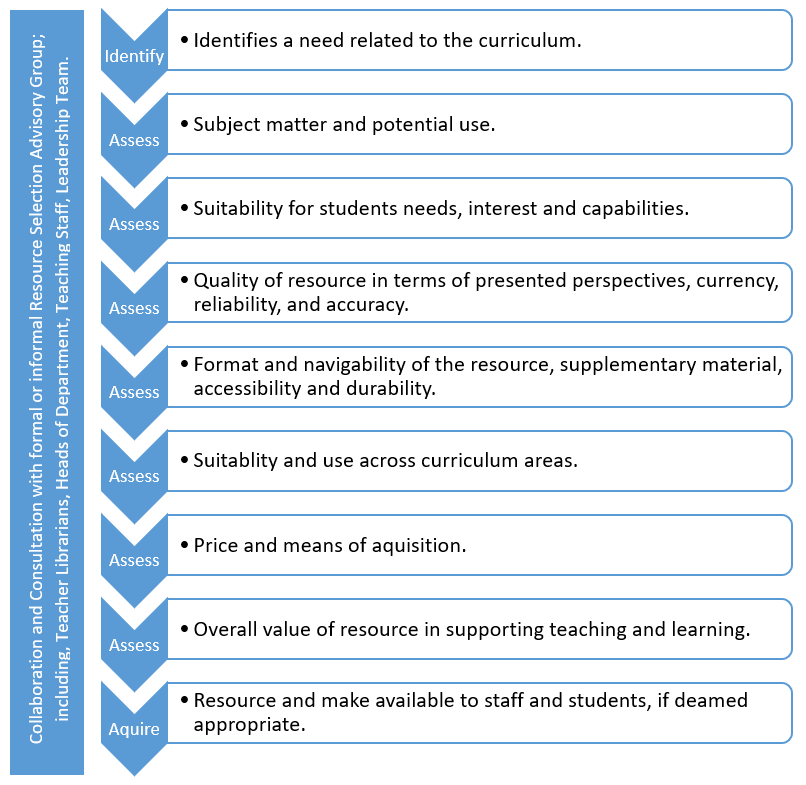Selection and Management Issues: eBooks
eBooks can pose additional selection and management issues than their print counterpart. Traditional selection criteria apply to the evaluation of eBooks; however, the management of digital resources is more complex. Three issues of related to selection and management include; functionality and quality, accessibility, and licensing.
Functionality and Quality
Specific issues related to the selection of eBooks are the functionality and quality of the digital resource. Firstly, libraries must consider if the eBook is presented in a way that is intuitive, enhances the reading experience and is delivered via a reliable platform. When selecting eBooks, it is also important to note that some titles may be restricted by publishers, while other titles may not be available as an eBook. Selection can also be an overwhelming and sometimes fruitless process due to the vast quantity of eBooks available. As suggested by McKay et al., there is limited guidance in the digital world to point to high-quality resources (2012). This can cause the selection process to be cumbersome, as Teacher Librarians encounter a significant volume of eBooks of varying quality; particularly, those that are free. Luckily, major libraries such as State Library of Victoria have curated collections as well as companies such as Goodreads, who provide reviews and recommendations, which assist in the selection of quality resources.
Accessibility
In a BYOD school environment, issues of accessibility may be present. Some platforms can cross devices; however, many cannot. Furthermore, if these schools create their own eBooks, issues of accessibility exist, as the eBook can be effectively read on one type of device but not on another (ALIA, 2013). This also causes problems when loading e-readers on to these devices, as there will be different e-readers for different devices. For example, the Writing and Citing eBook I created for my employer can be read effectively through iTunes on MacBooks; however, for PC users to access the eBook, the interactivity had to be edited down and after extensive testing it was found that the best platform for the eBook to be read was the Readium app through Google Chrome. This work-around has been successful; although, it is time-consuming and not an ideal way to deliver material across a school, as there are different sets of instructions for different devices and different levels of quality.
Licensing
Licensing models differ between publishers and it is vital to know and understanding the licensing agreement between publisher and school. Considerations include; number of concurrent users, number of loans, and changing or expiring license terms and renewal periods. Additionally, libraries must purchase eBooks through “suppliers that have negotiated DRM [digital rights management] with publishers and can pass the rights on to libraries” (National Library of New Zealand, n.d.). In essence, the library does not own the purchased eBook, so the issue exists whereby the library only has access while they are subscribed to the digital distributor. DRM also stipulates the number of borrowers of an eBook at any one time and the time period it can be borrowed for (ALIA, 2013). These policies assist in the protection of material; however, also pose restrictions on access. To increase access, as library must subscribe to a higher plan, which can be costly. The cost of purchasing eBooks can be higher than the retail price and higher still if multiple users are allowed.
References
Australian Library and Information Association [ALIA]. (2013). Ebooks and elending issues paper. Retrieved from http://www.alia.org.au/sites/default/files/documents/advocacy/Ebooks%20and%20Elending%20Issues%20Paper%20FINAL.pdf
McKay, D., Buchana, G., Vanderschantz, N., Timpany, C., Cunningham, S.J., & Hinze, A. (2012). Judging a book by its cover: interface elements that affect reader selection of ebooks. Proceedings of the 24th Australian Computer-Human Interaction Conference, 381-390. doi:10.1145/2414536.2414597
National Library of New Zealand. (n.d.). Ebooks in the school library. Retrieved from https://natlib.govt.nz/schools/school-libraries/collections-and-resources/selecting-resources-for-your-collection/ebooks-in-the-school-library
[Reflection: Module 2.3]
